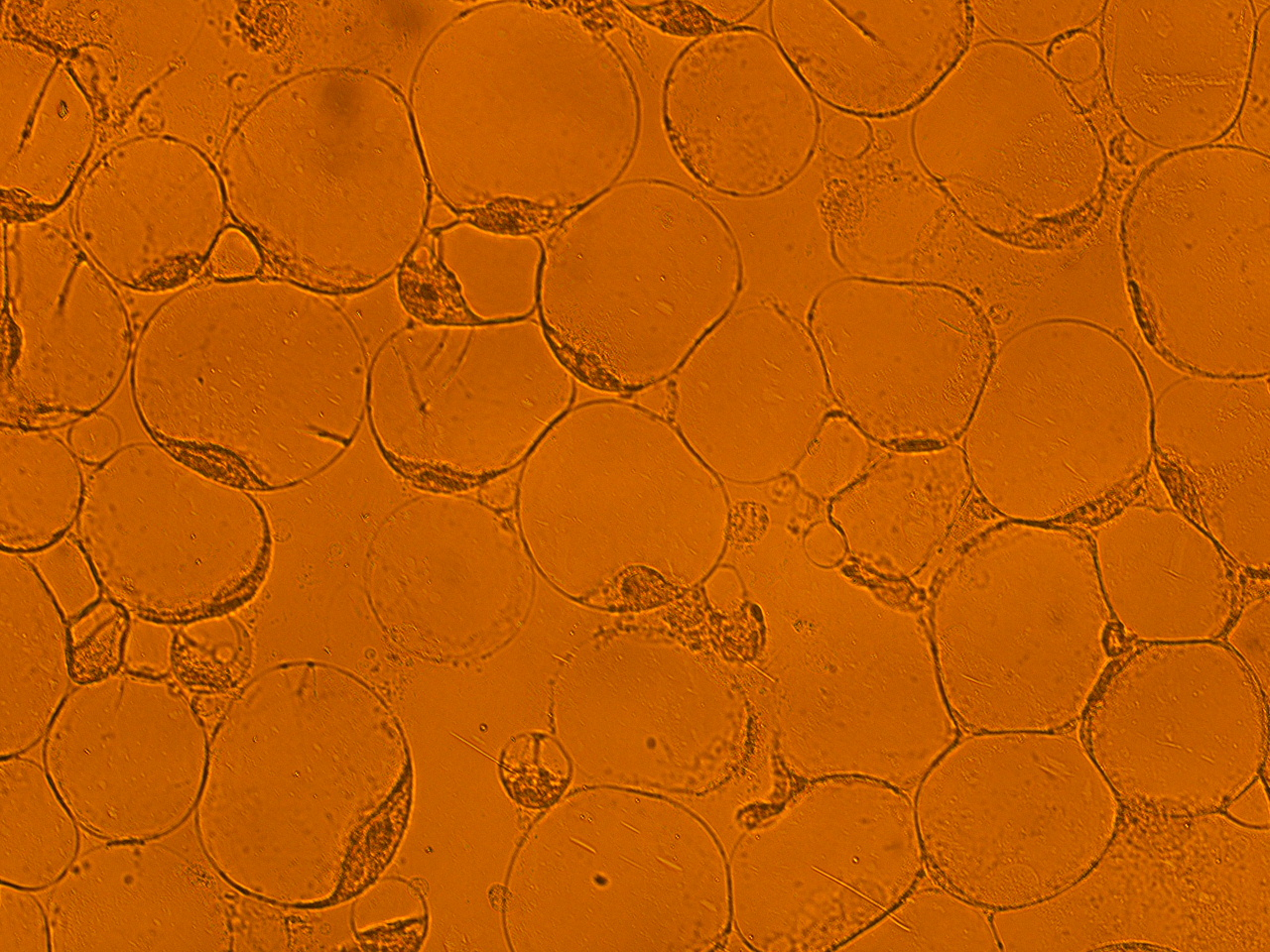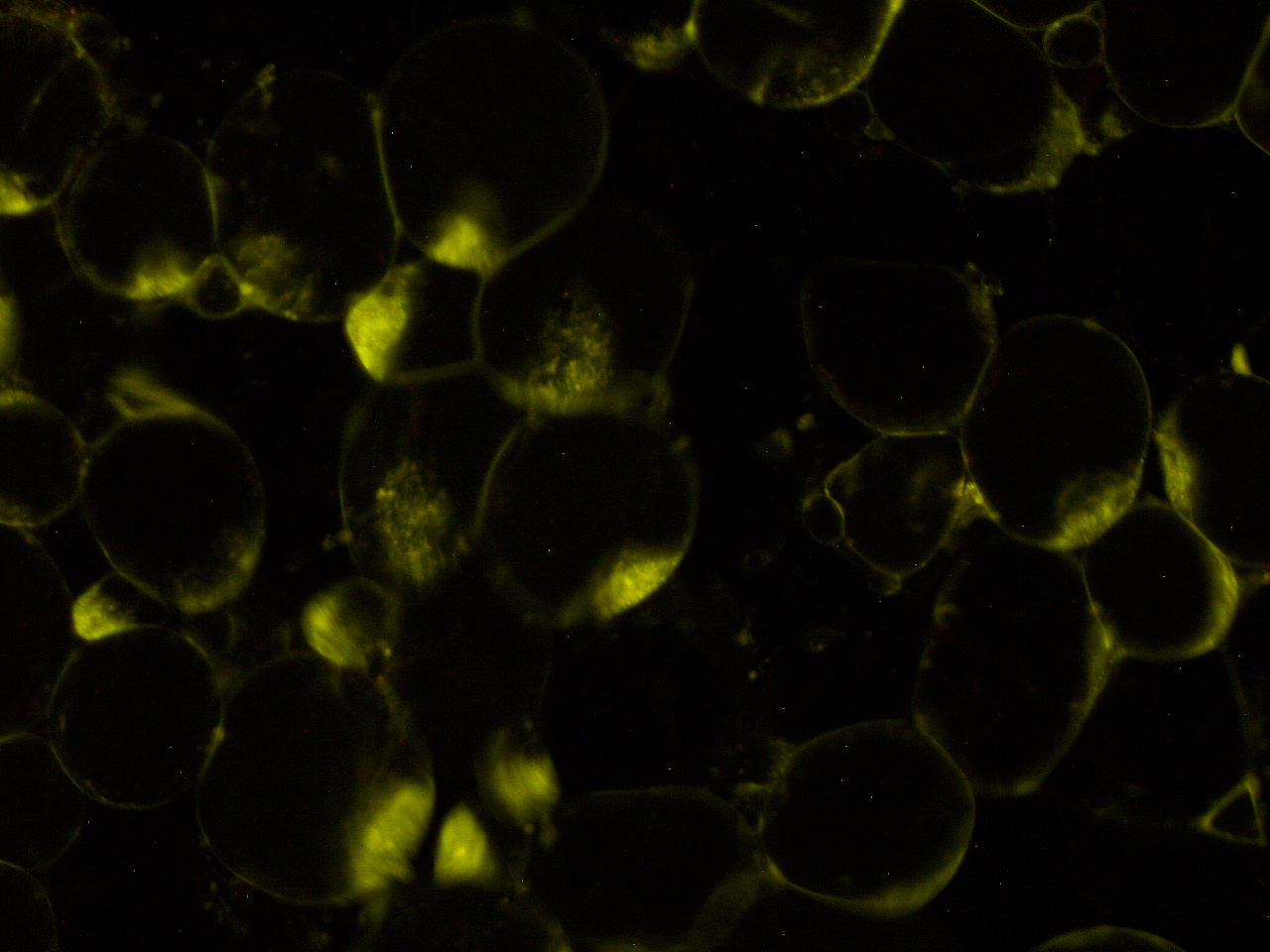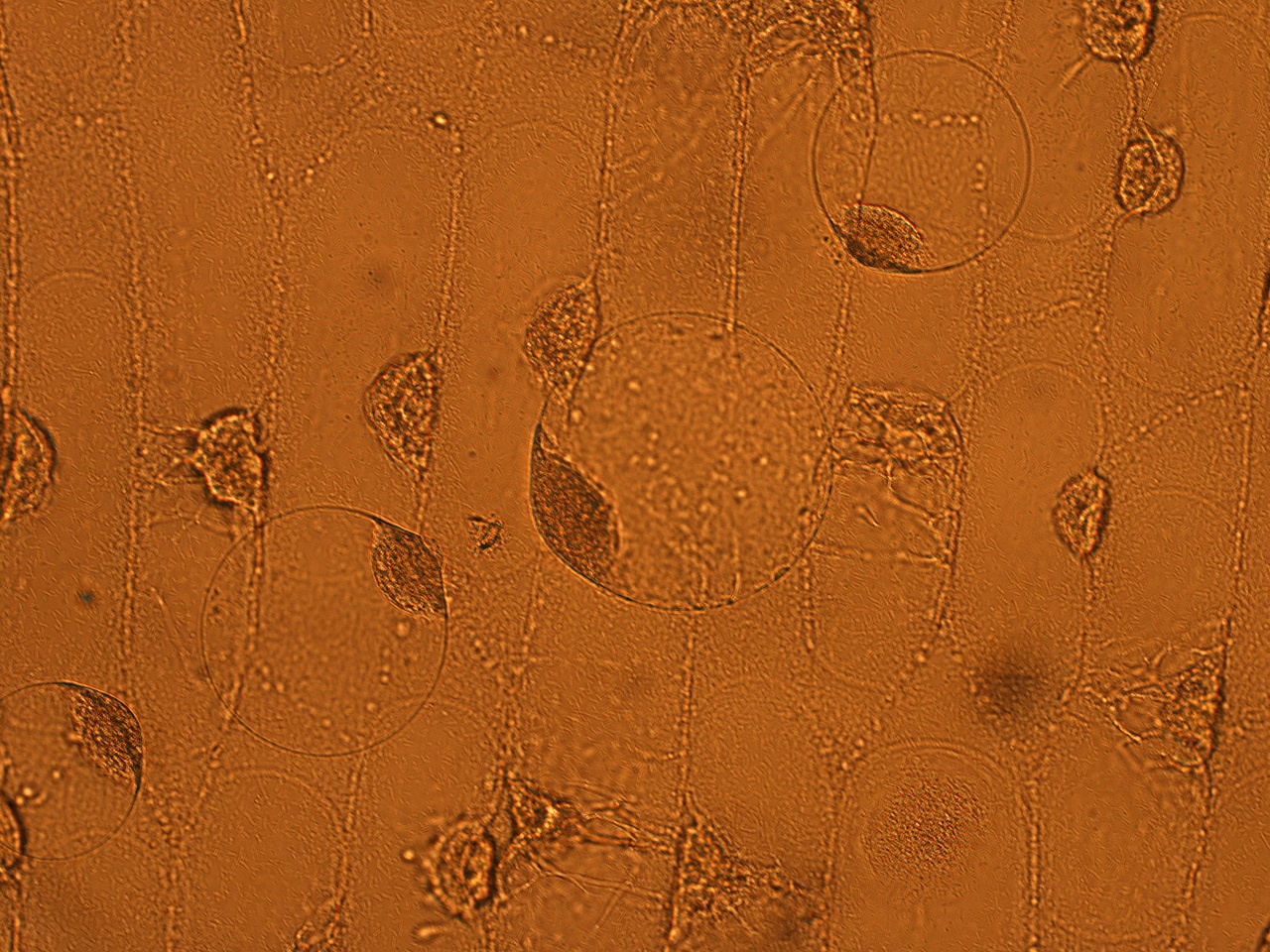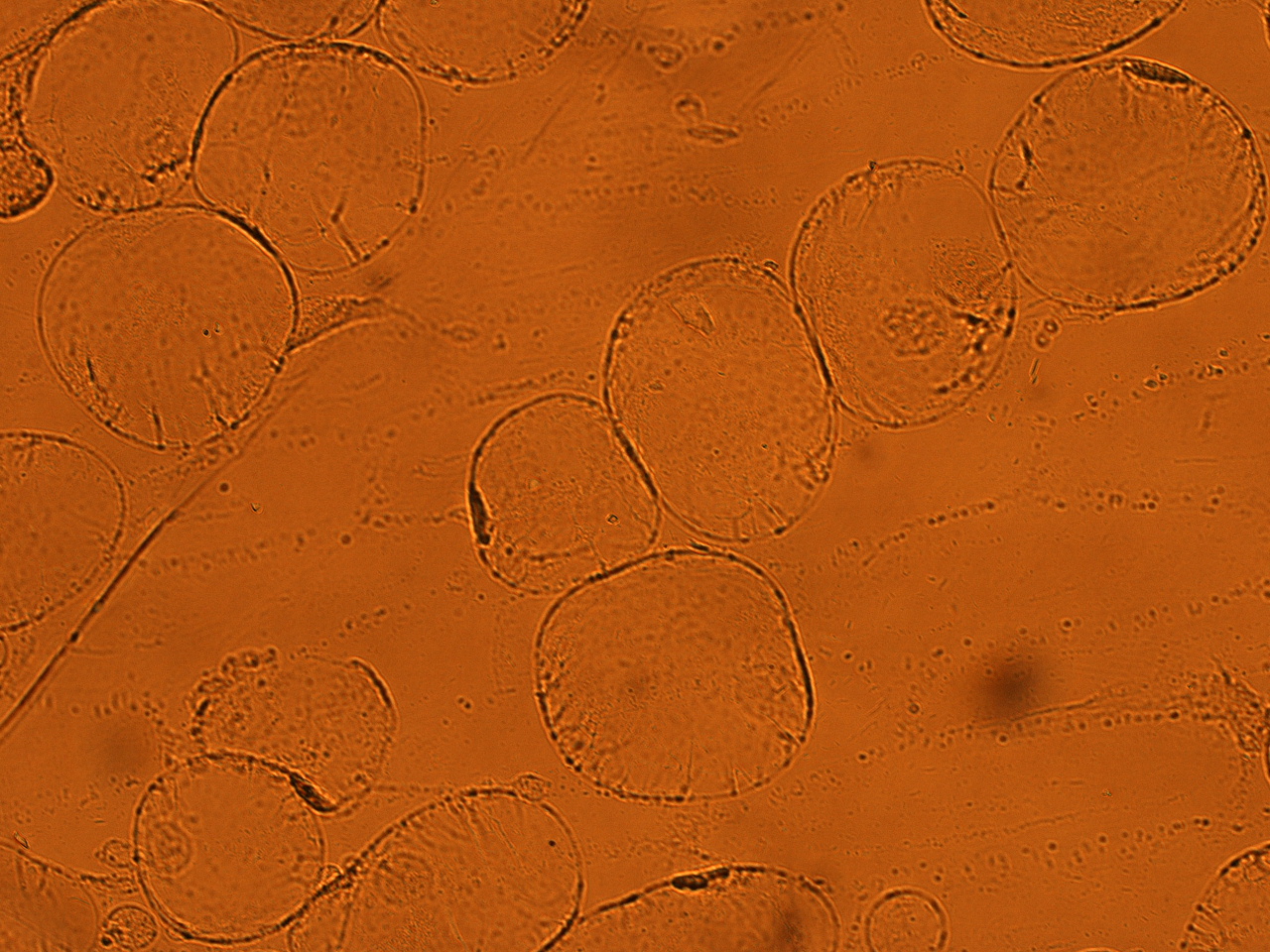Team:HokkaidoU Japan/Project/Onion
From 2011.igem.org
m (→Results) |
m (→Results) |
||
| Line 74: | Line 74: | ||
<div style="clear:both;"></div> | <div style="clear:both;"></div> | ||
| - | We think the reason of localization of the green fluorescence in Figure 2 comes from the existence of huge vacuole. T3SS cannot pierce a cell membrane and vacuole membrane at once considered from its function[[Team:HokkaidoU_Japan/Project/T3SS#How_does_it_function.3F|*]]. Thus GFP can not enter into a vacuole. | + | We think the reason of localization of the green fluorescence in Figure 2 comes from the existence of huge vacuole. T3SS cannot pierce a cell membrane and vacuole membrane at once considered from its function[[Team:HokkaidoU_Japan/Project/T3SS#How_does_it_function.3F|*]]. Thus GFP can not enter into a vacuole. Closely observe the onion cells in figure 2, we can see the brightest fluorescence at the cytoplasm, and we can see the weak fluorescence along the contour of the onion cells. It suggest that GFP was injected between cell membrane and vacuole membrane. Although this GFP also has nuclear localization signal, we could not judge whether the GFP localizes in the nucleus or not. But it could be said that the injection assay using onion cells is a valid and easy-to-use method. |
</div> | </div> | ||
{{Team:HokkaidoU_Japan/footer}} | {{Team:HokkaidoU_Japan/footer}} | ||
Revision as of 00:24, 6 October 2011
HokkaidoU Japan
iGEM 2011 Team of Hokkaido University
Contents |
- Abstract
- What`s T3SSDetailed information about T3SS and summary of our achievements on iGEM 2010
- Injection assay using onion cellsExperiments using plant cells are easier to perform than with mammalian ones
- Ready-to-inject backbone and Bsa I cloning siteReady-to-inject backbone and Bsa I cloning site enables easy fusion of T3S signal and protein
- GSK tag systemA neat injection assay using GSK tag, which can specifically detect successfully injected proteins
- Bsa I cloning site, RFC submissionDetailed documentation of costructing a BioBrick cloning site a BioBrick!
Injection assay using onion cells
SUMMARY
Last year, we have achieved to inject GFP to the RK13 cells (cultivated rabbit kidney cell) using E. coli which has T3SS. However, using animal cells is not so convenient. For example, we must start to cultivate the cells a couple of days before infection, or deterioration of cultivation environment results in death of cells immediately. Then, we thought up an idea that we might solve these problems by using onion cells. Onion has very wide availability and onion cells is tolerant of bactelia. Moreover, since onion forms detatchable monolayer cell-sheets, we thought that we can observe them easily. Thus, we tried repeatedly to establish injection protocol for onion cells. Finally, we were successful.
REQUIRED STUFF
- the E. coli strain we have established last year which can inject GFP into eukaryotic cells.
- epidermal cell sheet of onion
- reagents
- MgM-MES pH7.2
- MgM-MES pH5.0
- 0.4M Mannitol in MgM-MES pH5.0
- 1% cellulase 0.1% pectriase in 0.4M Mannitol solution (pH7.0)
- 20% L-arabinose solution
- Tetracyclin
- Chroramphenicol
PROCEDURE
Prepararion of bacterial suspension
- Isolate a single colony of E. coli that is to be used. Cultivate in liquid LB (with no antibiotics) for 2 hours.
- Add 500ul of culture fluid to 2ml of liquid LB. Add proper amount of antibiotics (Tetracycline and Chroramphenicol). Add 50ul of 20% L-arabinose solution.
- Cultivate over night at 37C, 200rpm
- Centrifuge the culture fluid at 25C, 3000rpm, 10minutes. Remove supernatant.
- Add MgM-MES(pH5.0), Tetracycline, Chroramphenicol, L-arabinose to the bacterial perette. Resuspende with vortex. Cultivate at 37C, 200rpm, 4hours. This step is required because T3SS encoded in Salmonella SPI-2 region expresses in acidic environment.
- Centrifuge the culture fluid at 25C, 3000rpm, 10minutes. Remove supernatant.
- Resuspend the perette with 2ml of MgM-MES(pH5.0) with 0.4M Mannitol, then centrifuge at 25C, 300rpm, 10 minutes. Remove supernatant. Repeat this step for 3 times. (Remove the toxic substances that is produced by E. coli and adjust the osmotic pressure to onion cells)
- Resuspende the perette with 2ml of MgM-MES(pH5.0) with 0.4M Mannitol, add Tetracycline, Chroramphenicol and L-arabinose.
- Measur the absorbance 600nm wavelength with a spectrophotometer, then adjust the concentration of culture fluid to delta-OD = 0.06 by diluting with the same medium mentioned above.
- Make the onion infected with the E. coli by adding 500ul of culture fluid onto the processed onion cell-sheets. Leave at RT in petri dishes (Preventing from drying)
- Remove the bacterial culture fluid carefully with micropipette so that the cell-sheets are not to be torn. Observe the cells using a fluorescence microscope.
Preparation of onion cells
We thought that the cell wall might interfere injection of protein, so onion cell-sheets were treated in the following way to dissolve the cell wall.
- Cut a onion into four pieces, take out a fresh layer of cells (second or third layer from the surface).
- Cut the layer into rectangular (about 1.5cm x 3cm)
- Tear off a cell sheet from the inner surfase of the layer, stick the sheet onto a slide glass at reverse. It is because the outside of the cell sheet sheds enzyme solution.
- Fasten the sheet onto slide glass by tracing its edge with 1% Agarose gel.
- Fill a petri dish with 1% cellulase and 0.1% pectriase in 0.4M Mannitol solution (pH7.0), then put the slide glass into the enzyme solution.
- Wait for 8min at RT
- Prepare 3 petri dishes, filled with MgM-MES pH5.0 with 0.4M Mannitol. After processing with enzyme, wash 3 times in these petri dishes to remove enzyme solution.
- Remove excess moisture, and transfer the sample to another petri dishs for infection.
Results
We carried out infection assay using following E. coli:
- T3SS signal(+)-GFP_T3SS signal(-)-RFP
- T3SS signal(-)-GFP
- T3SS only
Here we show the results of infection assey figure 1 to 7. Figure 1 to 3 shows the results of infection assay using the E. coli which we have made last year. That E. coli has T3SS, GFP with secretion signal, and RFP.
In Figure 2, we can see that the onion cells exhibit green fluorescence which came from the injection of GFP. On the other hand, we cannot see that the onion cells exhibit red fluorescence. It is because RFP was not injected because of the lack of the secretion signal.
Figure 4 and 5 shows the results of infection assey using the E. coli which has T3SS and GFP without T3SS signal.
We cannnot see the green fluorescence inside these onion cells like figure 2. This GFP does not have secretion signal, it is not injected to the onion cells.
Figure 6 and 7 shows the results of infection assey using the E. coli which has T3SS but does not have any fluorescence protain.
We think the reason of localization of the green fluorescence in Figure 2 comes from the existence of huge vacuole. T3SS cannot pierce a cell membrane and vacuole membrane at once considered from its function*. Thus GFP can not enter into a vacuole. Closely observe the onion cells in figure 2, we can see the brightest fluorescence at the cytoplasm, and we can see the weak fluorescence along the contour of the onion cells. It suggest that GFP was injected between cell membrane and vacuole membrane. Although this GFP also has nuclear localization signal, we could not judge whether the GFP localizes in the nucleus or not. But it could be said that the injection assay using onion cells is a valid and easy-to-use method.
 "
"














